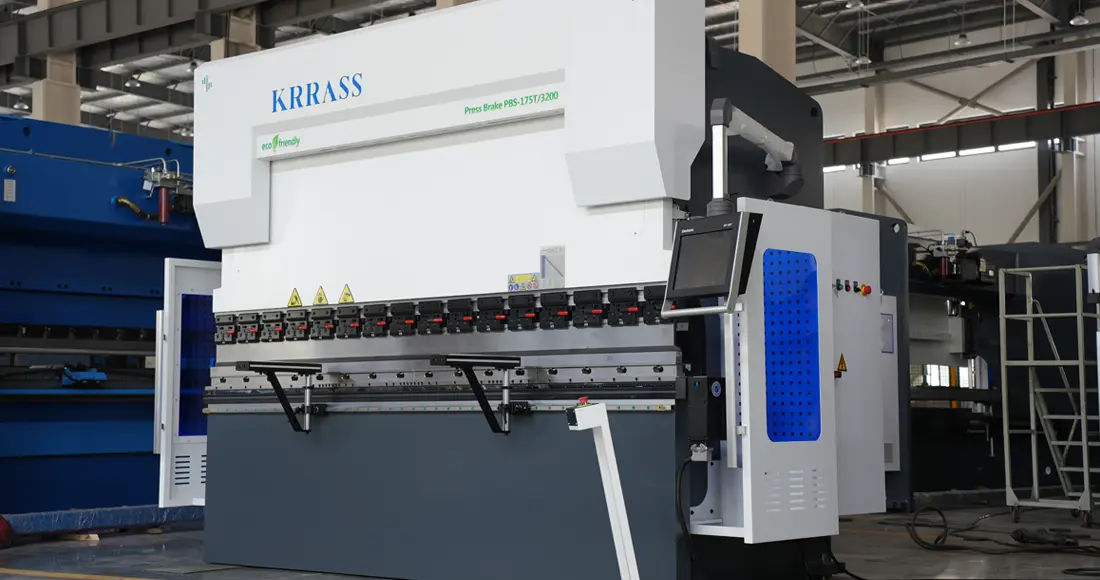In the world of metal fabrication, the press brake stands as a pivotal machine. A deep understanding of this essential tool can optimize your operations, leading to better output quality and efficiency. In this comprehensive guide, we'll unravel the ins and outs of press brakes, focusing on their structures, core components, types, and functioning, with special attention to press brake machines.
- What is the Press Brake
- Importance and Applications of Press Brakes
- Understanding Basic Operating Principle of Press Brakes
- Types of Press Brakes: Mechanical, Pneumatic, Hydraulic, and Electric
- Structure of a Press Brake
- Core Components of Press Brakes
- The Mechanics of Bending with a Press Brake
- Maintenance and Troubleshooting of Press Brakes
- How do I choose the right press brake for my application?
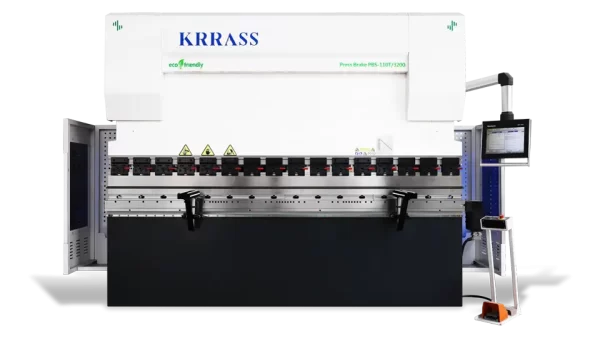
1. What is the Press Brake?
In the realm of metal fabrication, a crucial tool that plays a significant role is the press brake. But what exactly is it? The press brake, often also referred to as a brake press machine, is a machine tool used primarily for bending sheet and plate material. It forms predetermined bends by clamping the workpiece between a matching punch and die.
Essentially, the press brake is a piece of manufacturing equipment where a tool, die, and sheet metal are placed. The die, which is shaped as per the required bend, rests on the table (or bed). The sheet metal is located on top of the die, while the tool, or punch, presses down onto the sheet metal and forces it into the die to form the preferred bend.
From the automotive industry to aircraft manufacturing, and from kitchen appliances to construction, press brakes are employed widely. They are integral for shaping metal parts for various industrial applications and are noted for their precision and efficiency. A range of press brake models is available, from manual to CNC (Computer Numeric Control) machines, each offering specific advantages based on the requirements.
It's essential to note that the function and efficiency of a press brake hinge significantly on its components. To understand the process of bending and shaping metal with utmost precision, one needs to delve deeper into its structure and the different press brake parts.
2. Importance and Applications of Press Brakes
In the manufacturing world, press brakes have an undeniable significance. They have transformed the way we shape and design metallic parts, adding to the precision, uniformity, and efficiency of the process. Thanks to press brakes, we have a consistent method to create intricate designs and complex bends in metal sheets and plates.
One of the principal reasons for their critical role is the wide range of applications. Press brakes are versatile tools that cater to numerous industries. These industries demand strict standards for the manufacturing of their products, where the tolerance for error is minimal. Therefore, the usage of press brakes becomes inevitable.
Automotive Industry
In the automotive industry, where precision and accuracy are paramount, brake press machines are extensively used. They shape and bend metal parts such as body panels, frames, brackets, and other essential parts of vehicles.
Aerospace Industry
The aerospace industry also reaps the benefits of press brakes. They help in shaping parts of airplanes, spacecraft, and related machinery, where the necessity for precise bends and folds is of utmost importance.
Construction and Infrastructure
In construction and infrastructure, press brakes are utilized for manufacturing structural steel, HVAC parts, roofing, and other equipment. The shaping of these materials is crucial for ensuring the durability and stability of our buildings and infrastructure.
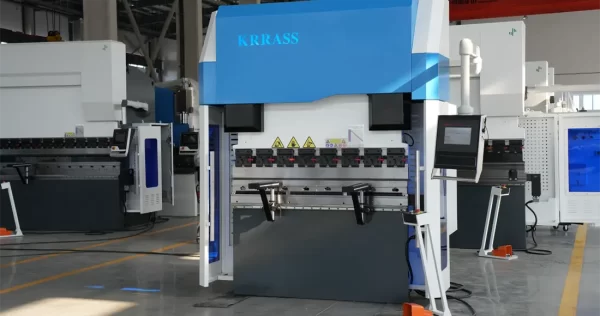
3. Understanding Basic Operating Principle of Press Brakes
To comprehend the intricacies of press brake parts and their functionalities, it's essential first to understand their basic operating principle. The concept, though might seem complex, is based on a straightforward mechanical principle.
In its most fundamental form, a press brake is a machine that bends and shapes metal under pressure. It uses force, applied through a set of punch and die, to bend metal. The basic operation can be broken down into three simple steps:
Clamping
The metal sheet or plate to be bent is clamped between the punch and die. The punch is usually the upper component and the die is the lower one.
Bending
After the workpiece is securely clamped, the punch descends and presses the metal into the die. This process exerts force on the metal, causing it to bend.
Releasing
Once the metal is bent to the desired angle, the punch retracts, releasing the workpiece. The newly bent metal can then be removed and the process repeated as necessary.
This basic principle of operation remains the same across all types of press brakes, whether they're manual, hydraulic, or CNC-controlled. However, what differentiates them is the method used to apply force and the level of automation and precision they provide.
4. Types of Press Brakes: Mechanical, Pneumatic, Hydraulic, and Electric
As the manufacturing industry has evolved, so have the machines used within it. Press brakes are no exception, and over time, different types have emerged, each with its unique strengths. They can be categorized mainly into four types: mechanical, pneumatic, hydraulic, and electric. Let's explore each one:
Mechanical Press Brakes
Mechanical press brakes, the earliest form of press brakes, employ a flywheel and crank mechanism to deliver force. While they're powerful and can achieve high speeds, they lack precision and flexibility when compared to more modern types. Today, due to safety concerns and control limitations, they are being replaced by other variants.
Pneumatic Press Brakes
Pneumatic press brakes use air pressure to generate force. They are lighter, less costly, and simpler to maintain than other types. However, their use is typically restricted to lighter tasks due to the limited force they can produce.
Hydraulic Press Brakes
Hydraulic press brakes use hydraulic fluid to transmit power. They are versatile, offering more control over force and speed compared to their mechanical counterparts. This control allows for higher precision and the ability to handle heavier materials, making them popular in the industry.
Electric Press Brakes
Electric press brakes are the latest innovation. They utilize electric motors and ball screws to deliver force, offering exceptional precision and energy efficiency. These machines are gaining popularity due to their high speed, lower noise levels, and environmentally friendly operation.
While each type of press brake has its advantages, the best choice depends on specific factors such as the nature of the work, the materials to be bent, and the desired level of precision. Up next, we will delve deeper into the structure and key components of these machines.
5. Structure of a Press Brake
A press brake is an assembly of numerous components, each playing a pivotal role in the machine's functioning. For the sake of clarity and coherence, let's break down the major structural components into three parts: Frame Construction, Bed and Ram, and Back Gauge System.
5.1. Frame Construction
Components and Material
The frame of the press brake is its backbone. It's usually made up of steel plates welded together and forms a rigid structure that can withstand the immense pressures exerted during the bending process. The key elements of the frame include the side plates, the bed, and the ram.
Role in Overall Stability
The sturdiness of the frame significantly impacts the stability and precision of the brake press machine. A well-constructed frame ensures that there's no distortion or deflection when the machine is in operation, thereby contributing to accuracy and consistency in the end products.
5.2. Bed and Ram
Description and Function
The bed and ram are integral press brake parts attached to the frame. The bed, or bottom part of the machine, is where the die is mounted. The ram (or beam), the top part, is where the punch is attached. The ram moves up and down, forcing the metal sheet into the die to create bends.
Importance in Bending Process
The bed and ram are vital to the bending process as they directly influence the quality and precision of bends. These parts must be accurately aligned and stabilized to avoid any deviation in the bend angles.
5.3. Back Gauge System
Components and Purpose
The back gauge system consists of a set of stops and rulers located behind the bed. It serves as a positioning system, helping operators align the workpiece accurately to achieve precise bends.
Advancements and Automation
Over time, the back gauge system has seen significant advancements, with many modern press brakes featuring automated and programmable back gauges. These enhancements increase accuracy and speed while minimizing manual intervention.
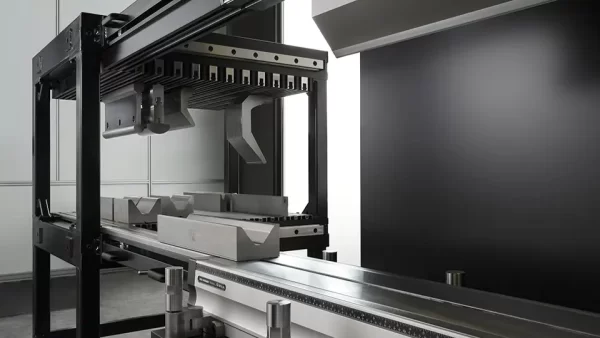
6. Core Components of Press Brakes
While the structure of a press brake forms its body, the core components form its operational heart. These include the Punch and Die, Controls and CNC System, and Safety Devices. Let's delve into these aspects:
6.1. Punch and Die
Types and Materials
Punches and dies are critical press brake parts that directly interact with the workpiece to form bends. They come in various shapes and sizes to accommodate a wide range of bending operations. The most commonly used materials for punches and dies include hardened steel and tungsten carbide due to their high strength and durability.
Selection Criteria
Choosing the right punch and die depends on several factors: the type and thickness of the material to be bent, the desired bend radius and angle, and the specifications of the press brake machine. The correct selection ensures efficient operation and high-quality results.
6.2. Controls and CNC System
Role in Precision and Efficiency
The control system, often a Computer Numerical Control (CNC) system, is the brain of a modern press brake. It allows operators to program the bending process with high precision, controlling variables such as bending angle, depth, and speed. This greatly enhances productivity, accuracy, and consistency.
Understanding CNC Codes
CNC codes are essentially the instructions that guide the machine. These codes tell the machine what to do and when to do it. G-codes, for example, are used for motion control, while M-codes control other machine functions. Understanding these codes is crucial for operators to effectively control the bending process.
6.3. Safety Devices
Types and Importance
Safety devices are crucial components of any press brake. These include light curtains, safety guards, and hydraulic clamps, among others. They ensure the operator's safety, protect the workpiece from accidental damage, and maintain the machine's optimal performance.
Best Practices for Safe Operation
For a safe operation, operators should be adequately trained, always use safety gear, maintain a clean workspace, and follow the machine manufacturer's guidelines. Regular maintenance and inspection are also essential to ensure the machine's safety features are functioning correctly.
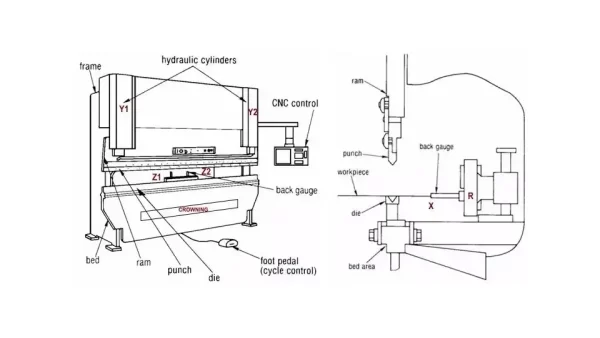
7. The Mechanics of Bending with a Press Brake
The intricate design and precise operation of a press brake are most visible when it bends metal sheets. This bending process is a play of various forces and material properties and employs different techniques. Let's explore this in detail:
Bending Forces and Material Properties
Bending involves applying force to a metal sheet to deform it into the desired shape. The amount of force needed depends on the thickness and type of material, the bend angle, and the length of the bend. The material's properties, such as its yield strength and elasticity, significantly impact how it responds to the bending force.
For instance, a material with a high yield strength will require a more substantial force to bend, while a more elastic material will spring back more after bending, requiring over-bending to achieve the desired angle. Knowing these properties is crucial to effectively control the bending process and achieve high-quality results.
Role of the Press Brake in Different Bending Methods
Different bending methods can be applied using a press brake. These include air bending, bottoming, and coining. The type of press brake and the selection of the appropriate punch and die are essential for these methods.
In air bending, the material is only in contact with the punch and die at three points. The press brake exerts force to push the material into the die, but not all the way. This method allows for a wide range of bend angles using the same die.
In bottoming and coining, the material is pushed all the way into the die. Coining requires more force but results in more accurate and consistent bends.
By understanding the bending mechanics, operators can optimize the bending process, improving the efficiency and quality of the produced parts. All these elements, when combined with the robustness of a press brake and its various components, offer a truly flexible and efficient metal bending solution.
With the detailed insights provided in this article, it's clear that the press brake, a cornerstone in the field of metal fabrication, is a marvel of modern engineering. Its complex design, coupled with precise operation, facilitates the creation of countless metal products essential for various industries.
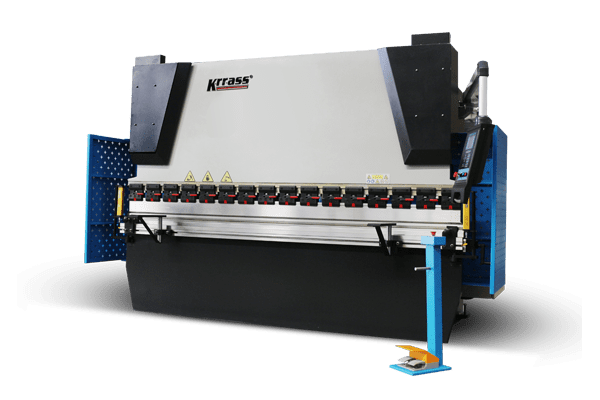
8. Maintenance and Troubleshooting of Press Brakes
Just like any other machinery, press brakes require regular maintenance for optimum performance and a long lifespan. Occasionally, common issues may also arise, necessitating troubleshooting. Let's discuss these aspects:
Routine Maintenance Practices
Proactive maintenance can help prevent many common problems in a brake press machine. Some key routine practices include:
- Cleaning: Keeping the press brake clean, especially the punches and dies, can prevent material build-up that may cause inaccurate bends.
- Lubrication: Regular lubrication of moving parts reduces friction and prevents premature wear and tear.
- Inspection: Regularly inspecting the machine for worn-out parts or any signs of damage can help identify and fix issues before they lead to major breakdowns.
- Alignment Checks: Ensuring that the punch and die are correctly aligned is crucial to prevent damage and ensure accurate bends.
Common Issues and Troubleshooting Tips
Despite the best maintenance practices, issues may still arise. Here are some common issues and troubleshooting tips:
- Inaccurate Bends: If the bends are not accurate, check the alignment of the punch and die, the material properties, and the settings in the CNC system.
- Machine Noise: Unusual noises can indicate problems such as lack of lubrication, loose components, or failing parts. Inspect the machine and carry out necessary maintenance.
- System Error Codes: Modern press brakes come with error codes to help identify specific issues. Refer to the manufacturer's manual to understand these codes and take appropriate actions.
While minor issues can be handled by operators, significant problems should be addressed by trained technicians to avoid further damage to the machine. Regularly servicing your press brake machine by a professional can also be a good investment in the long run.
By diligently following these maintenance and troubleshooting steps, you can ensure that your press brake stays in top shape, performing at its best to meet all your metal bending needs.
9. How do I choose the right press brake for my application?
Choosing the right press brake for your specific application is crucial. It will not only affect the quality and efficiency of your operations but also impact the longevity and maintenance needs of your machinery. Here are some key factors to consider:
Understanding Your Requirements
Firstly, define your needs. Consider the type of work you will be doing, the materials you will be bending, the thickness of these materials, and the complexity of the bends. The volume of work and the precision required will also influence your choice.
Types of Press Brakes
Mechanical, hydraulic, pneumatic, and electric press brakes each have their unique features. For example, hydraulic press brakes are powerful and suitable for heavy-duty work, while electric press brakes offer high precision and energy efficiency. Choose a type that aligns with your operational needs.
Capacity
The press brake's capacity, often measured in tonnage, should be adequate for the material and thickness you will be working with. Also, consider the working length – the brake press machine should be able to handle the size of your workpieces.
Automation and Control
Modern press brakes come with CNC controls, which offer high precision and automation. If you have high-volume work or complex bends, choosing a press brake with advanced CNC controls will be beneficial.
Manufacturer and Service
Lastly, consider the reputation of the manufacturer and the service they provide. Good after-sales service, availability of spare parts, and machine warranties can be essential in the long run.
By taking these factors into account, you can select a press brake that is best suited for your application, enhancing your productivity and ensuring the best results from your metal bending operations.
Please let me know if there are other aspects you'd like me to cover.
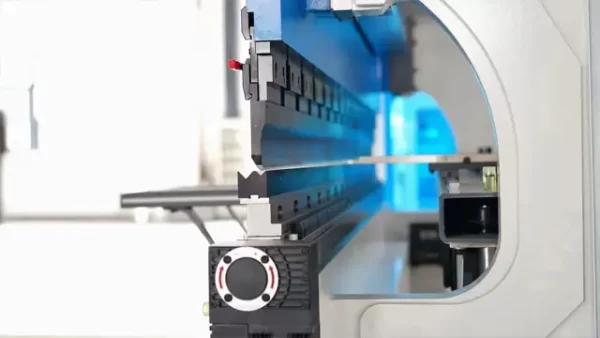
Conclusion
Press brakes, particularly hydraulic press brakes, are invaluable to industries for precise metal bending tasks. Understanding its structure and components not only empowers users to optimize its functionality but also contributes to its maintenance and lifespan. As a leading manufacturer, Krrass offers an impressive range of high-quality press brakes and other sheet metal machinery, enabling industries to meet their fabrication needs with precision and efficiency.
Read More:
Precautions for The Use of CHINA CNC PRESS BRAKE
How to choose a Hydraulic Press Brake?
Enhancing Accuracy in China Press Brake Bend Calculations: Factors and Solutions
